Email is widely recognized as the most effective marketing channel for driving sales.
Unfortunately, collecting emails isn’t a walk in the park. It’s hard.
There are over a billion websites online, and that number continues to grow by the second. How are you supposed to hold anyone’s attention in that kind of environment?
It gets worse. According to an article in Time Magazine, the average user will stay on your site for just 15 seconds. So even if someone notices your little corner of the web, it won’t be for long.
Finally, you need to offer your fickle visitors something of value―something special enough for them to willingly trade their email address for it.
Yes. It’s tough out here. But don’t worry. There ARE effective ways to grow your list.
After publishing two bestselling books, and interviewing more than a dozen highly successful entrepreneurs over the past year, I’ve found that writing a book is one of the best (and most underutilized) strategies.
Take, for example, my latest book launch. Before the book was released, I only had a handful of subscribers. In January, I started promoting my launch. And here’s what happened to my list:
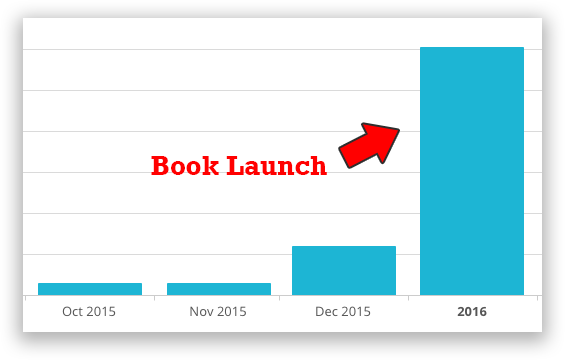
In the first 30 days following my official launch, I added over 100 new subscribers to my list. The absolute number isn’t all that exciting, but the month-over-month increase is staggering (just look at that graph!)
Need more evidence?
I’m not the only one using books to grow my list.
I learned the technique from brilliant marketers and 7-figure entrepreneurs like John Lee Dumas, Tom Morkes, and the Chief Sumo himself, Noah Kagan. (See Podcast Launch, The Art of Instigating, and How I Lost 170 Million Dollars).
Other bestselling authors are seeing amazing results, too:
- Taylor Pearson leveraged his book to grow his email list from 700-3,500 in less than a year. That’s 500% growth ― almost the exact same increase I saw during my launch.
- New York Times bestselling author Joanna Penn gives her books away, adding thousands of subscribers to her list.
- And bestselling author Jeff Goins has used his books to build a list of over 100,000 fans.
These results aren't reserved for the lucky few who already have established audiences. You can do it, too. I’m evidence of that.
This guide will show you exactly how to replicate the results described above. But first, let’s examine why books are so effective in the first place.
The Hidden Benefits of Authoring a Book
There are two reasons why books have become such powerful tools for list-building:
1. Self-Publishing has changed the game
It’s now possible to launch books without getting permission from traditional gatekeepers. No one is stopping you.
Ten years ago, writing and publishing a book in the nonfiction space required a mainstream topic and a baked-in audience. Otherwise, publishers wouldn’t pick you up.
Now, anyone with an internet connection can publish on Amazon and distribute their books across the globe.
When executed correctly, consumers can’t distinguish between a self-published book and a traditionally published book. The result? Immediate street credit as an authority. In other words, authoring a book is a status symbol, and that process is more feasible and accessible to you than ever before.
2. In the entrepreneurial era, writing books builds authority and trust
The new economy is driven by entrepreneurship. Power is shifting from the corporation to the individual. More and more people are launching companies or working for themselves. Everyone goes to college now, so a degree is no longer impressive.
Writing a book has become the new differentiator. It defines your brand and expertise with far greater depth than an educational degree.
As bestselling author James Altucher puts it, “Every entrepreneur should self-publish a book: because self-publishing is the new business card. If you want to stand out in a world of content, you need to underline your expertise. Publishing a book is not just putting your thoughts on a blog post. It’s an event.”
Important: If you publish a crappy book, no one will care about it and it won’t help you. So if you decide to move forward with this strategy (which you should), the quality of production needs to be top-notch.
By following the guidelines in this article, your book can effectively build your list of subscribers in every phase of its development (from pre-launch, to mid-launch, to post-launch).
Here’s what we’re going to cover:
- Why Choosing Your #1 Goal is The First Step
- The Three Approaches to Finding a Topic
- The 3-P’s: Market Research Hacks
- Writing: These Tricks Make It Easy
- The 50% Rule: Or, Stop Writing and Start Selling
- Design and Marketing: The Biggest Mistake Amateur Authors Make
- How to Choose a Title That Doesn’t Suck
- Pricing: High Price Niche vs. Low Price Broad
- Selling Platforms: Amazon, or Direct Pay?
- Launch Week: How To Capitalize on Your Hard Work
Get out your notepad and sharpen your pencils, errrr...I mean open Evernote and bookmark this page.
Here we go.
1. Why Choosing Your #1 Goal is The First Step
If you don’t specify your primary goal in writing a book, you’ll quickly lose sight of why you’re doing it in the first place.
Without that direction, you’ll end up traveling down a bunch of rabbit holes, wasting time and money―and potentially sabotaging yourself.
Need some ideas? Typical goals include:
- I want to grow my list
- I want to build authority
- I want to make money
Now, which goal are you tackling? Ranking them by importance will guide your actions. You’ll often find that one goal opposes the other, which is why it’s so critical to identify a primary focus.
For example, if making money is your top priority, you should choose a niche topic and sell your book for a higher price. This means fewer units sold, but more income per sale. That’s great for profit, but not great for growing your list.
If your main goal is list-building, you should write about a broader topic and sell your book at a lower price point (or even give it away for free). This article focuses on list-building strategies, so if you’re trying to optimize for profit, you can stop reading now.
Otherwise, onward!
2. The Three Approaches to Finding a Topic
When it comes to finding a topic to write about, you might think the answer is market research.
And you’d be half-correct. Market research is good for identifying customer needs (which we’ll discuss in the next section), but there’s another preliminary step.
Before researching whatever you think is “hot right now,” brainstorm topics based on your personal passions and experience. Make sure you’re writing about something you truly care about.
Writing for the sake of building a list will end badly. The best case scenario is that you’ll hate writing it, but the worst case? Your audience will see right through you, and your book will flop.
Here are the three main frameworks I use when brainstorming new topics:
- Explain how to do something. Example: Venture Deals, by Brad Feld. This book teaches entrepreneurs how to understand and negotiate term sheets.
- Offer a strong opinion relating to a trend. Example: David and Goliath, by Malcolm Gladwell. This book argues that underdogs often have the advantage.
- Tell an interesting story. Example: Finding Ultra, by Rich Roll. This book tells the story of Rich Roll’s transformation from a sluggish, out-of-shape lawyer into one of the fittest men on the planet.
If you can identify a passion and then combine the three frameworks above to write about it, you’ll have a home run. Yes, these are broad suggestions, but they’ll get your mind moving in the right direction.
How To Narrow Your Focus
After landing on a topic, you might think it’s a good idea to cover that subject as broadly as possible.
But you need to get more specific.
People read nonfiction books to learn. They don’t want to hear the same old story, or some broad, generic solution. So your book should provide specific solutions to specific problems.
You also need to hash out why this is an important issue to solve, and who you’re solving it for. Without this directed approach, your book won’t find an audience―which means no subscribers to your list.
If you’re speaking to everyone, you’re speaking to no one.
I use a simple exercise to determine the core purpose of my books and narrow the focus. I call it the 3 W’s:
- WHAT: What does the book teach the reader?
- WHY: Why is the book useful and relevant? (Why does it need to be written?)
- WHO: Who is the audience? (It should be a specific person.)
Click here to grab the actual worksheet I use for this exercise.
3. The 3-P’s: Market Research Hacks
Once you’ve decided on a topic, it’s time to validate it with research. Market research can also provide valuable insights for enhancing your content and promotion plans.
My favorite book on this topic is Will it Fly, by Pat Flynn. It was released in early 2016, and immediately became a #1 bestseller. Pat knows what he’s doing. His book will take you through a series of tests to help you find competing products, influencers, and early adopters.
One of the most valuable chapters in the book is about building a spreadsheet called a Market Map. Here’s how to do it:
Start by creating a Google Spreadsheet with three sheets, named Places, People, and Products. Then add these three column titles to each sheet: Name, Web Address, and Notes.
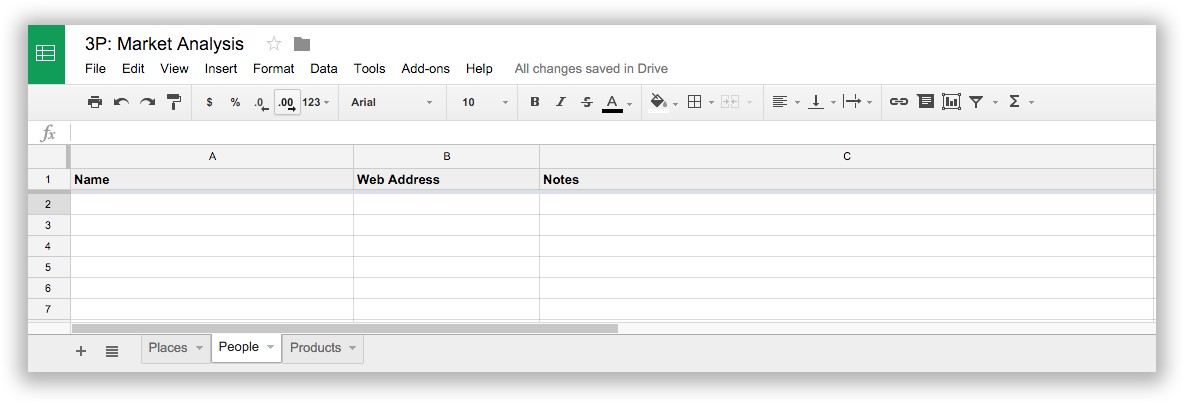
This is your “Market Map,” and it’s where you’ll record all the information you find from doing the following exercises.
Places
Let’s say you want to write a book about email marketing. You’d start your research by entering search terms into Google, like:
- blog: email marketing (This tells Google to look for blogs related to email marketing)
- forum: email marketing (This tells Google to look for forums related to email marketing)
- site: email marketing (This tells Google to look for websites related to email marketing)
Another tip is to review the “Searches Related To” results on Google, and use them as new search terms.
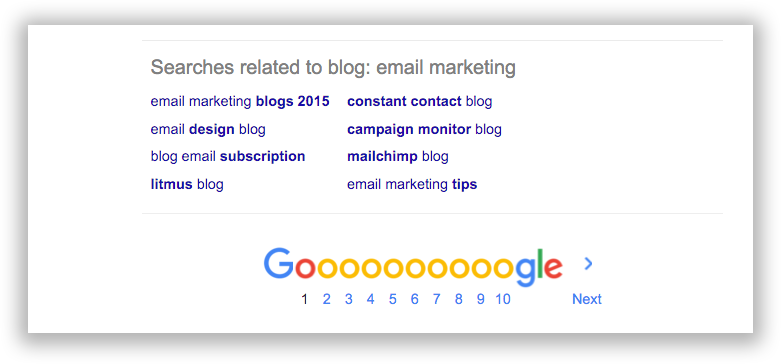
In this example, we can immediately see that Constant Contact and MailChimp would be relevant companies to dig into more deeply.
Social media groups are another great place to learn about your market. Search Facebook for related groups by using the same search term you used for Google, and then click the Groups tab.
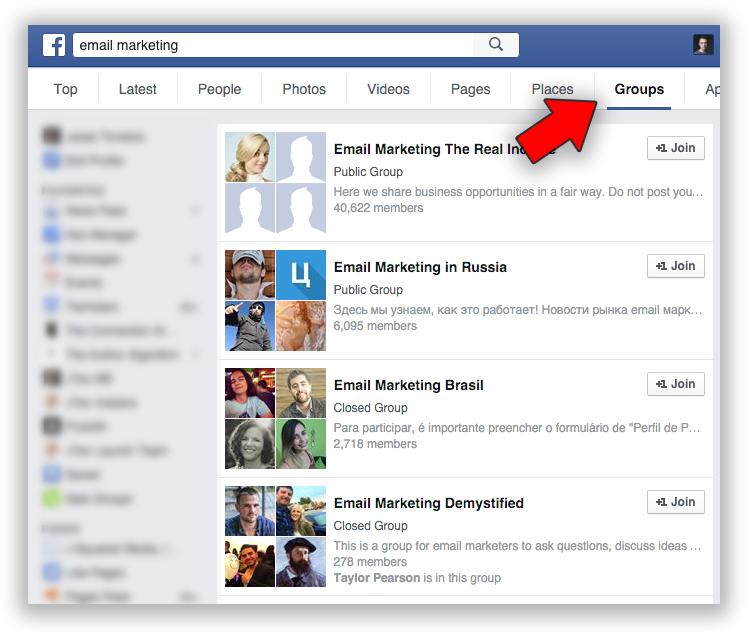
You might have to wait for an administrator to accept you into a group, so it’s best to do this months in advance, before you start writing.
You’ll find that Facebook groups give you a “pulse” on what’s happening in your market. Look for groups that are active and sizable. For example, one of my favorite groups is “The 7-Day Startup” group, which is run by Dan Norris, author of The 7-Day Startup.
My books relate to startups and entrepreneurship, so this is a great fit for me. The group has over 5,000 highly engaged members. When I launched my latest book, I messaged the group and received a ton of great feedback (not to mention sales).
As you find relevant blogs, forums, sites, and groups, add them to your Places sheet.
People
For the People sheet, search Twitter to find top influencers related to your topic.
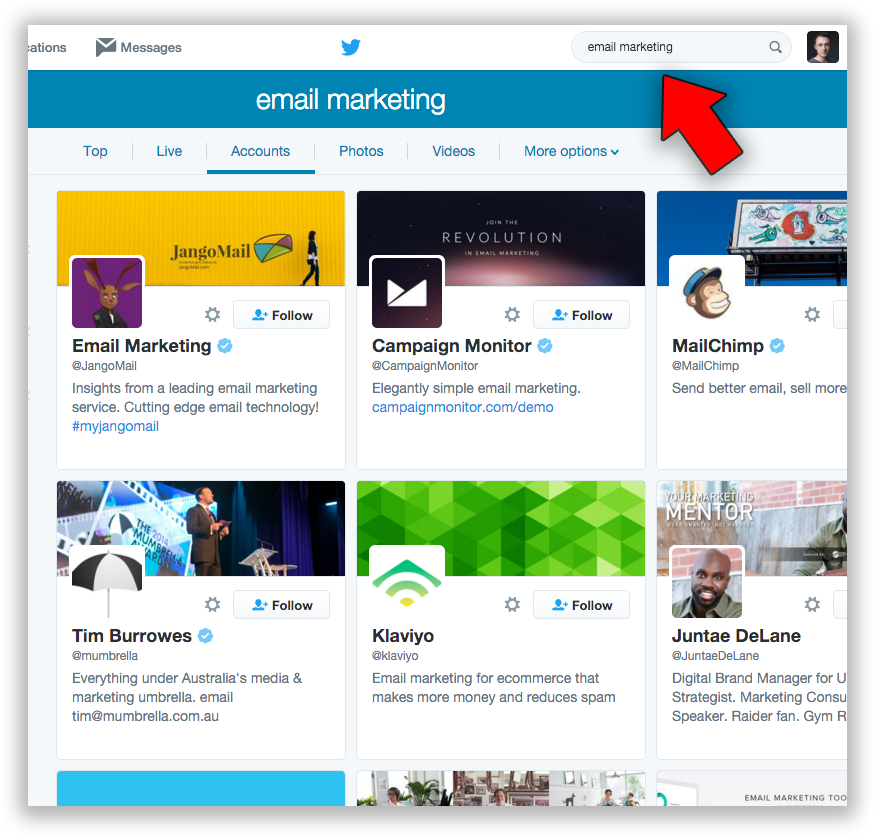
You can also use other networks, like Facebook, Instagram, Pinterest, and LinkedIn in a similar way. You’ll often find the same people popping up across multiple networks. This is a strong indicator that you should include them on your People sheet!
Pro tip: iTunes is another less obvious place to look for influencers, through podcast appearances. Once you’ve found a few influencers, enter their name into iTunes. If they’ve appeared on any podcasts, those podcasts will show up. You can then dig into those podcasts to find other people of interest. Then listen to the episodes for more information.
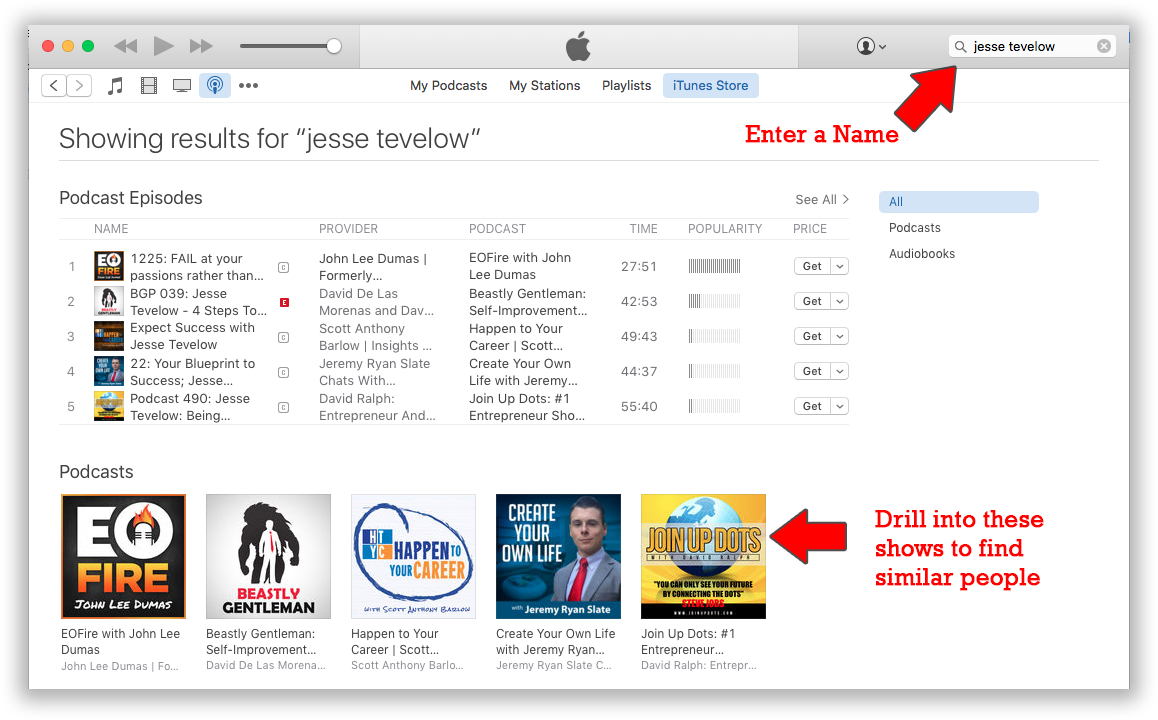
Products
For the Products sheet, there’s one obvious place to look: Amazon.
Simply enter your search term to find products related to your topic. Then drill into the books category to find direct competitors. Look at the reviews, and pay particular attention to the 2 and 3 star reviews.
Those usually contain legitimate feedback from people who liked the content on some level, but also felt that something was missing. This is key information for how you might be able to fill in the gaps with your own book.
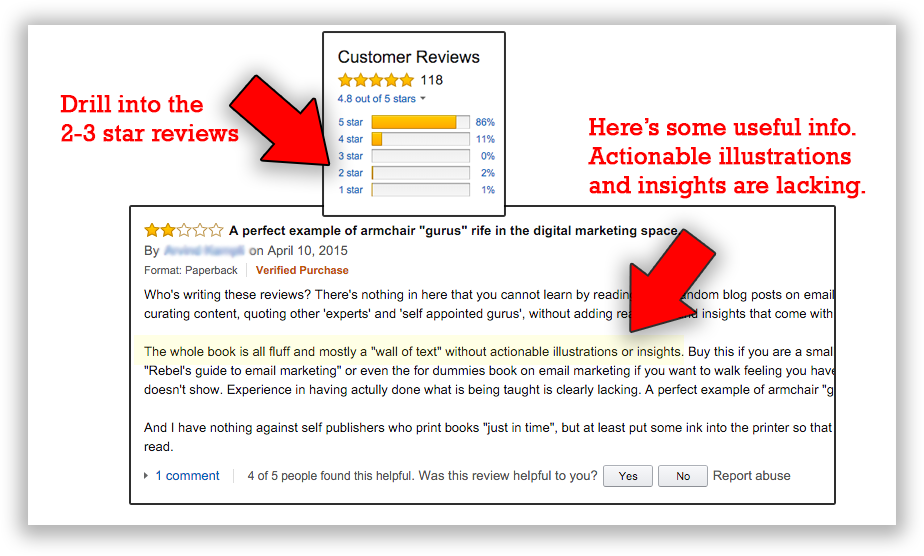
After completing these exercises and filling out your spreadsheet, you’ll have a full picture of the industry surrounding your topic, and a better understanding of how to provide value to your readers.
I suggest reaching out to a few of the influencers on your list, and becoming active in relevant Facebook groups, too. As you get more involved with the community, you’ll soak up knowledge and ultimately write a better book.
4. Writing: These Tricks Make It Easy
Okay, it’s time to write. If this part freaks you out, don’t worry. There are proven methods for easing the pain. In fact, when using the systems below, it sometimes feels effortless. I use two techniques for attacking the blank canvas: Outlining and Dictation.
How to Build Your Outline
Writing a book is a balance between structure and flexibility.
It’s important to lay out your roadmap in advance, but you should also go “off script” when you find yourself in the zone.
In Book Launch, author Chandler Bolt describes a simple outlining technique that I’ve used as the basis for my process. Pat Flynn also describes a similar approach in Will it Fly. (The images in this section are from Pat’s book.) Here’s how it works:
Step 1: Brain Dump (mind mapping). Take 30-60 minutes to write down ideas related to your book. This works best on a whiteboard, with sticky notes, or using index cards. Don’t worry about grammar or organization.
The content can include single words, phrases, or short sentences. You might include relevant stories from your life, tools related to your topic, a link to an article you recently read, important influencers from your Market Map spreadsheet, etc. Here’s what that might look like:
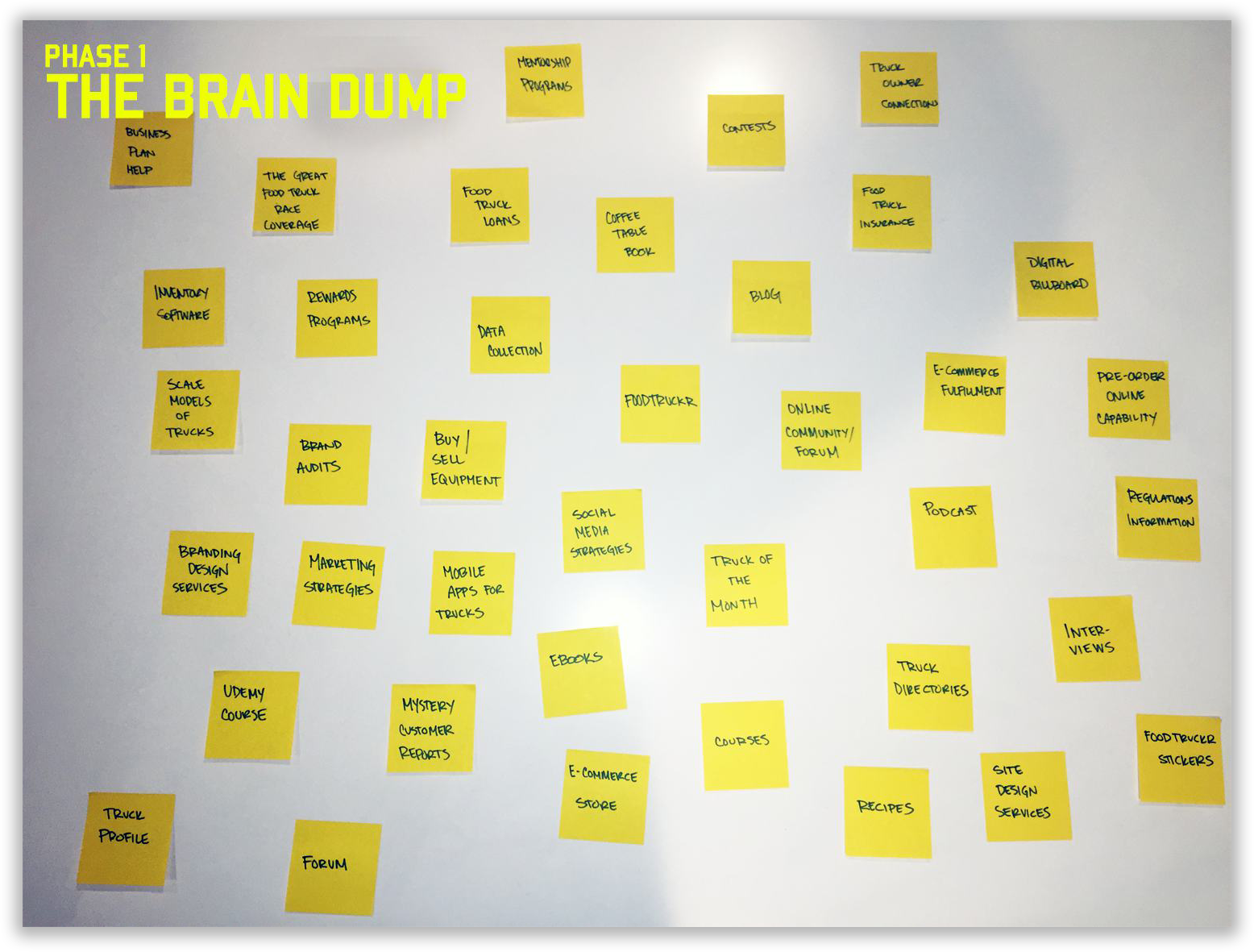
Step 2: Sections. Now organize the content into clusters. This is really easy with sticky notes or index cards. If you used a whiteboard (or paper and pencil), you can circle things and connect them with lines and arrows. There are also several software tools for doing this, like Mindmeister.
The groupings represent potential chapters. Add titles to categorize the sections. For example, if you’re writing about designing websites, the section titles might be: “Setting up Your Website,” “Tools of the Trade,” “Design Best Practices,” etc.
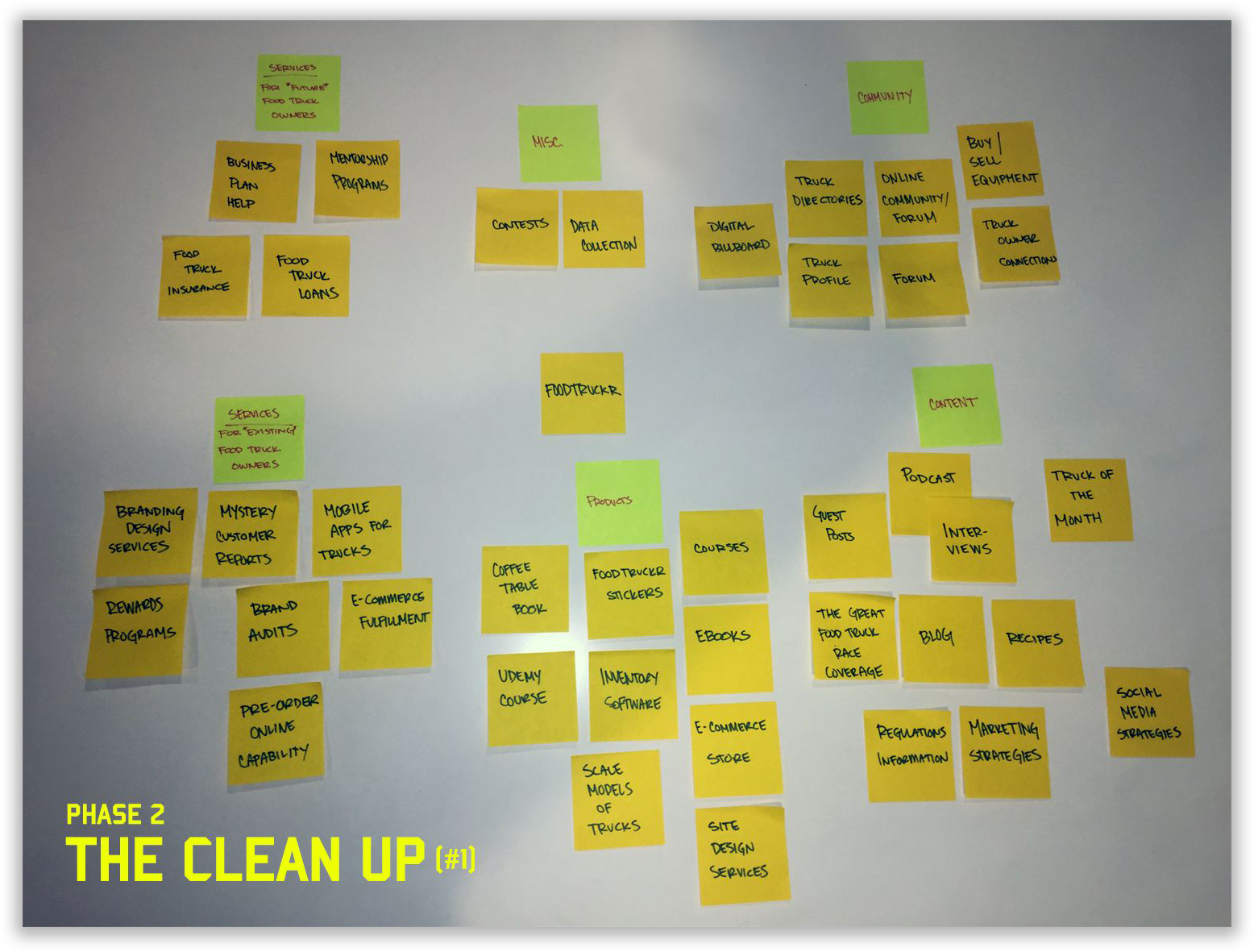
You can also refine this further by creating additional hierarchies, like this:
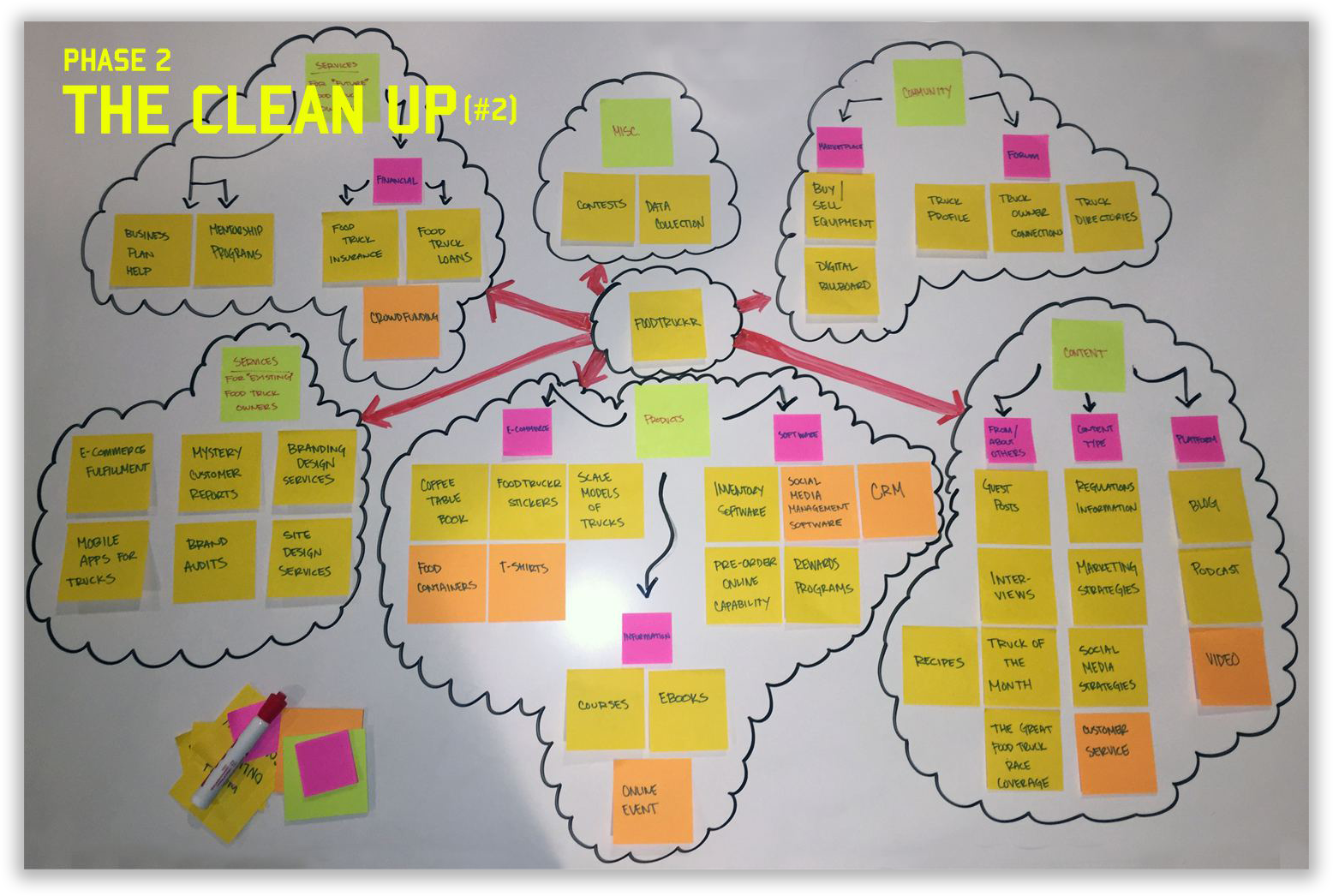
Step 3: Refine, and Convert to Outline Form. For this step, you’re pruning and organizing everything from steps 1 and 2. Don’t be afraid to remove elements that aren’t relevant.
Finally, transfer it into a manuscript document and order the sections in a way that feels logical. I use Google Docs for outlining my books.
Dictation
If you’re not too keen on the act of putting pen to paper, don’t fret. We live in amazing times. Google Docs now has a feature called voice typing.
Yes, it's exactly what it sounds like. Turn on the feature (Tools > Voice Typing), start talking, and watch the words flow onto the page as you speak.
It takes some practice, but once you get acclimated, it’s very efficient. You can even say things like “comma” or “period” and it will assume you’re talking about punctuation and add the specified symbol. I use this feature whenever I’m having a mental block. Once I have a bit of content to work from, I switch back to typing.
5. The 50% Rule: Or, Stop Writing and Start Selling
When I wrote my first book, I didn’t understand the importance of branding and marketing. Simply put, it should be half of your effort, or more.
“This is what we call the 50% rule: Spend 50% of your time on product and 50% on traction.” Gabriel Weinberg, Traction
Here are the main things you should be doing to set yourself up for significant traction.
Start a Wordpress Blog
Creating a blog is the best way to establish your digital home base.
Important note: You need to use Wordpress. This is non-negotiable.
Why? Because all the services for collecting emails (including Sumo are compatible with Wordpress.
Many of them are not compatible with other services like SquareSpace, Wix, or Weebly. Just trust me on this. This single piece of advice will save you hundreds of dollars down the road.
Create a Landing Page
Sumo has a handy tool called Welcome Mat for creating quick and easy landing pages. The feature adds a call-to-action directly to your homepage, asking visitors to join your email list. It takes up the entire screen initially, but users can simply scroll down to see the rest of your site.
Here’s an example of Welcome Mat (All content and styling is customizable):
This works extremely well because it focuses the reader’s attention. Remember―the average reader only spends 15 seconds on your site.
Simplifying the page by presenting a single call-to-action significantly increases your chances of achieving the intended result (an email submission) within those precious seconds.
Regardless of the landing page solution you choose, you should entice people to submit their email by promising a free copy of your book when it launches. This is known as a lead magnet. It incentivizes the visitor to submit their email.
Post Articles on Blogging Platforms
While you’re writing your book, you should craft related articles and publish them on blogging platforms like Medium or ThoughtCatalog. You can even publish content directly from your book as you write.
Throughout each article, find logical places in the content to direct people back to your landing page or website. You should also include a link at the end. Here’s an example:
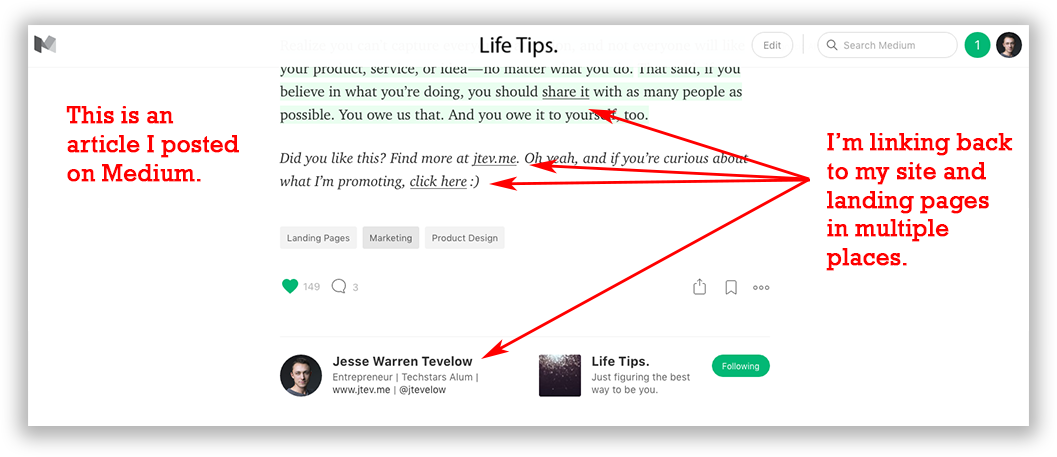
This is effective because platforms like Medium and ThoughtCatalog have massive audiences.
Instead of writing a post on your own site and getting only five people to look at it, you’ll be tapping into a pre-existing community. It gives you a much better chance of picking up new readers, who will then be more likely to convert after learning about your free book offering.
Reach out to Podcasters
Here’s the ultimate guide to getting featured on podcasts, courtesy of Taylor Pearson.
In your podcast interviews, refer to your book and mention the link to your landing page. You can even create customized landing pages for each podcast interview.
Having a book is a fantastic way to get invited on podcasts, so it’s doing double duty here. It’s serving as a lead magnet for your list, but it’s also acting as an asset for leveraging new promotion channels (in this case―podcasts).
Podcasts are effective because, just like blogging platforms, they allow you to tap into a pre-existing audience. Podcasts also tend to be highly targeted. You can search within specific categories on a site like PodBay to find shows that seem aligned with your book.
Guest Post
Guest posting can drive a ton of traffic and subscribers.
Again, within the post, link back to your site. (Yes, I’m writing a guest post and I’m recommending guest posting. So meta). The same theme applies here. Meaning, guest posting is valuable because it gives you access to a new audience.
If I published this post on my own website, I’d be lucky to reach 1,000 people. Sumo will push it to hundreds of thousands.
And why have they allowed me to write this article for them? (You guessed it―because I wrote a book).
Consider Crowd-Based Platforms
You can use Kickstarter, ThunderClap, or similar services to launch your book with a bang.
Using these services will present more list-building opportunities. Although your book is the main purpose for the campaign, you’ll be able to build relationships and collect emails throughout the process as well.
I did a Kickstarter for my first book, which raised nearly $17,000. But that wasn’t the most valuable part of it. The more valuable asset was the list of over 100 super fans I had collected.
Set Up a Giveaway
KingSumo is a tool for creating viral giveaways. To sign up for the giveaway, people must submit their email address. You can include your book, along with other items, as a prize. Or, simply give away books that are similar to your book. This will ensure you’re attracting the right kind of people to your list.
(For example, you wouldn’t want to attract soccer moms if your target audience is college students. So, select your prizes accordingly). Here’s a deep-dive article about KingSumo if you’re interested in learning more.
KingSumo is valuable because it supercharges your social media efforts. People are far more likely to share something if it’s free, and if it involves prizes. Furthermore, because of KingSumo’s unique sharing design―people are incentivized to invite their friends.
Create a Facebook Group
A private Facebook group is one of the best ways to find your biggest fans. Invite people to your group and post relevant material related to the topic of your book. The most active people in the group are your super fans. These people can be leveraged later through various tasks (see the next point below).
Set up a Launch Team
Having a launch team of people who truly care about your work, and mobilizing them to strengthen your launch efforts, can help your book gain it’s legs.
This could include sharing on social media during your launch, participating in Kickstarter campaigns, writing early reviews for your book, or providing early feedback on your rough drafts.
Bestselling authors including Michael Hyatt, Lewis Howes, and Pat Flynn (among others), have used this strategy by simply creating Facebook groups and organizing their teams within that system.
Engaging your biggest fans is important. It’s the most effective way to build buzz and momentum.
Market Within Your Book
Once you’re a published author on Amazon, you’ll have immediate access to the millions of people searching Amazon every day.
The beginning of your book (which can be read for free using the “Look Inside” feature on Amazon) presents a valuable marketing opportunity.
Add call-to-action links at the beginning and end of your book to direct people to your list signup page.
The call-to-action will drive new traffic to your landing pages and capture more list subscribers―even if they don’t purchase your book!
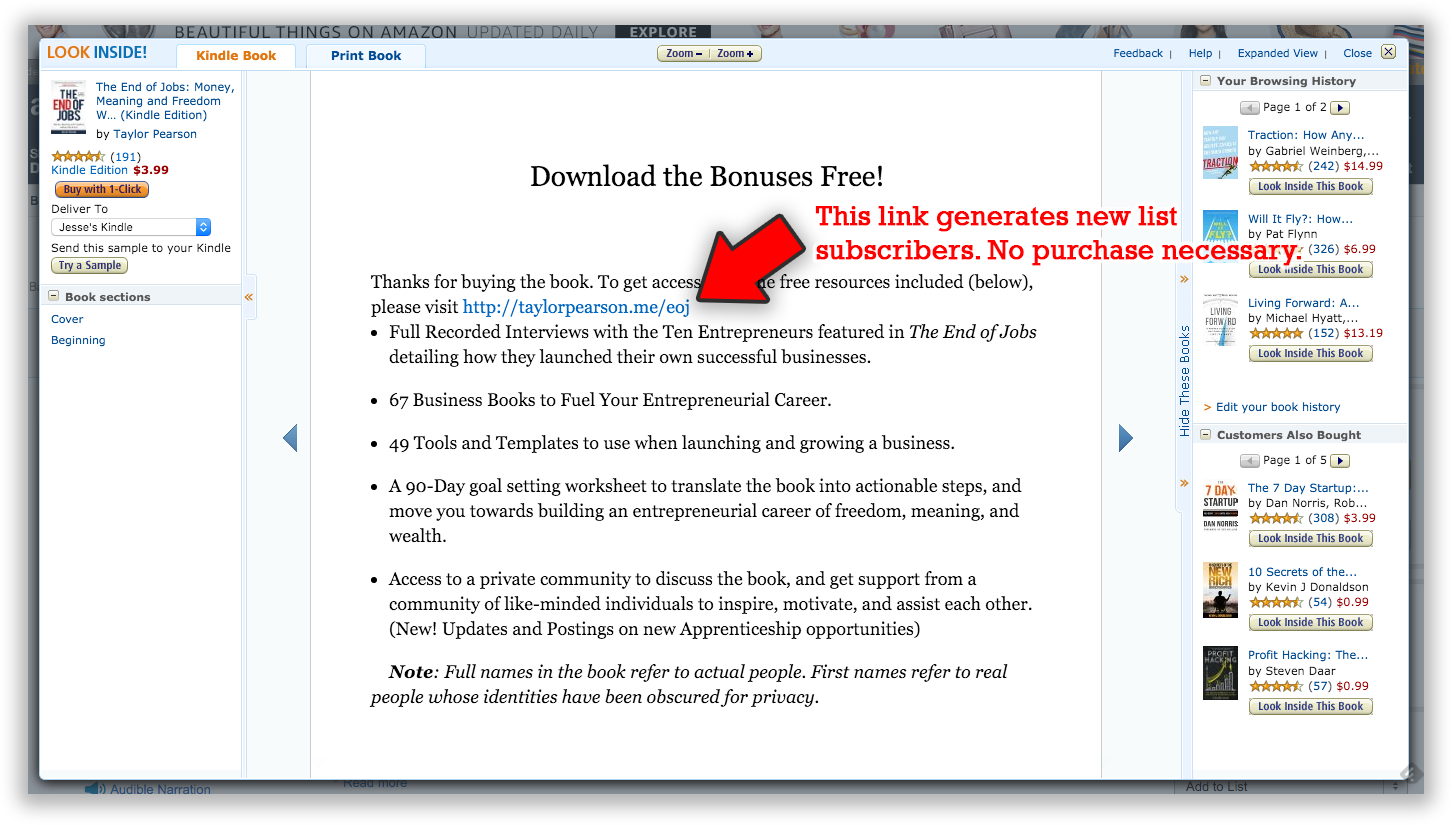
Following these guidelines will result in a solid book, and built-in hooks to grow your list before and after launch. But let’s take it a step further. The highest performing products have two other things in common.
- They look amazing
- They’re marketed well
6. Design and Marketing: The Biggest Mistake Amateur Authors Make
The importance of design and marketing can’t be understated, yet most self-published authors neglect it.
Remember, 50% (or more) of your time needs to be spent on gaining traction, and design and marketing are the two biggest factors in that equation.
Design is one of the few areas where traditional publishers still have an edge over self-publishers. But that’s only because the majority of self-published authors don’t spend the time or money investing in good design. All it takes is a little effort.
Design encompasses all aspects of the reader’s experience. This includes the interior layout, typography, interior graphics, front matter, back matter, cover/jacket design, the selected materials for paperback/hardcover versions―and even the content itself.
You can certainly learn how to do all of this on your own, but I recommend hiring contractors. You’ll save time, and likely end up with a better result.
Hire a Book Designer
For both interior and exterior design, I recommend Michelle from Digital Dragon Designery. She’s incredibly detail-oriented, responsive, and knowledgeable. Her prices are also very reasonable. An entire soup-to-nuts design will likely cost you a few thousand dollars, but it’s money well spent.
Alternatively, you can look for designers on design / freelance sites like Dribbble, Behance, or 99designs. Doing a quick search for ‘book designer’ also turns up some options.
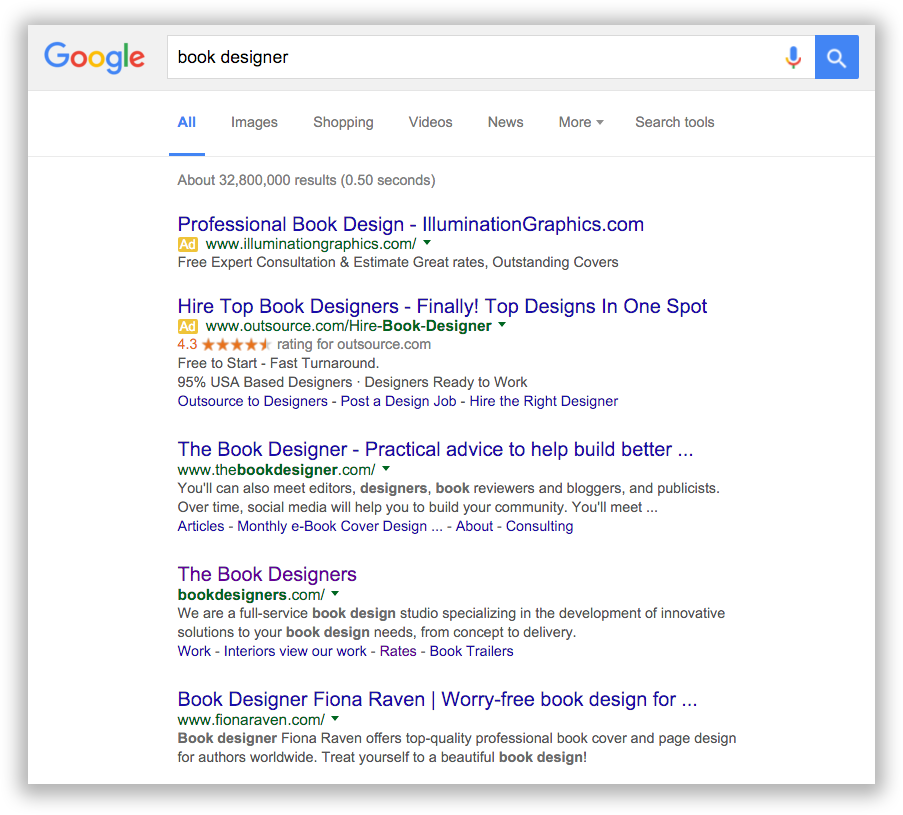
Don’t skimp on this. If your book doesn’t look professional, it won’t sell.
Get an Editor
I categorize every aspect of the user experience as design work. Editors craft your content. They make it more visually appealing by improving your prose, not only from a syntax perspective, but from an actual content perspective. These are usually two separate jobs done by two people:
- A copy-editor is focused on grammar, punctuation, and sentence structure.
- A content editor will actually dig into your material and suggest conceptual updates to make it better. This might include identifying logic-gaps, commenting on the book’s structure and pacing, and questioning your assumptions. They’ll also view your book from a marketing perspective to ensure the final output will be palatable (and useful) for your intended audience.
I recommend hiring both types of editors. I’ve worked with Sarah Lingley for copy edits, and she did a fine job. Elisa Doucette and her team at Craft Your Content has also been highly recommended by several bestselling author friends of mine. CYC has a team of both content editors and copyeditors.
Finally, on the higher end of the pricing spectrum, you can try Command+Z Content, run by Nils Parker and Ann Maynard. Their firm has produced a number of bestsellers.
Finding Contractors
To find other contractors a-la-carte, try searching Pronoun. They have a good database of talented freelancers who do everything from copy-editing to cover design.
Develop a Broad Marketing Strategy
Planning your overall marketing strategy can be daunting. You can certainly do it yourself, but it’s helpful to learn from (or work with) the experts. The biggest players in this space include:
Do yourself a favor by learning about these guys and joining their email lists. They all provide incredibly useful information, whether you end up buying their products or not.
Marketing your book could be an entire post, and I’m honestly not the authority on it, so I’m pointing you in the direction of the best people I know. That said, the tips and tricks in this post alone will put you ahead of 99% of the authors out there.
7. How to Choose a Title That Doesn’t Suck
Don’t get fancy with this. Your title should be crystal clear. It should never leave prospective readers guessing about the content.
The standard formula is to use a short, catchy title followed by a longer subtitle that plainly states the book’s value proposition.
Examples:
- Sprint: How to Solve Big Problems and Test New Ideas in Just Five Days
- Will it Fly? How to Test Your Next Business Idea So You Don’t Waste Your Time and Money
- The Power of Habit: Why We Do What We Do in Life and Business
- Living Forward: A Proven Plan to Stop Drifting and Get the Life You Want
- Traction: How Any Startup Can Achieve Explosive Customer Growth
Of course there are other successful books that don’t follow this structure, but this is what I see most often.
To get a sense of other successful nonfiction titles, go to Amazon and browse the bestseller lists within the business categories, like this:
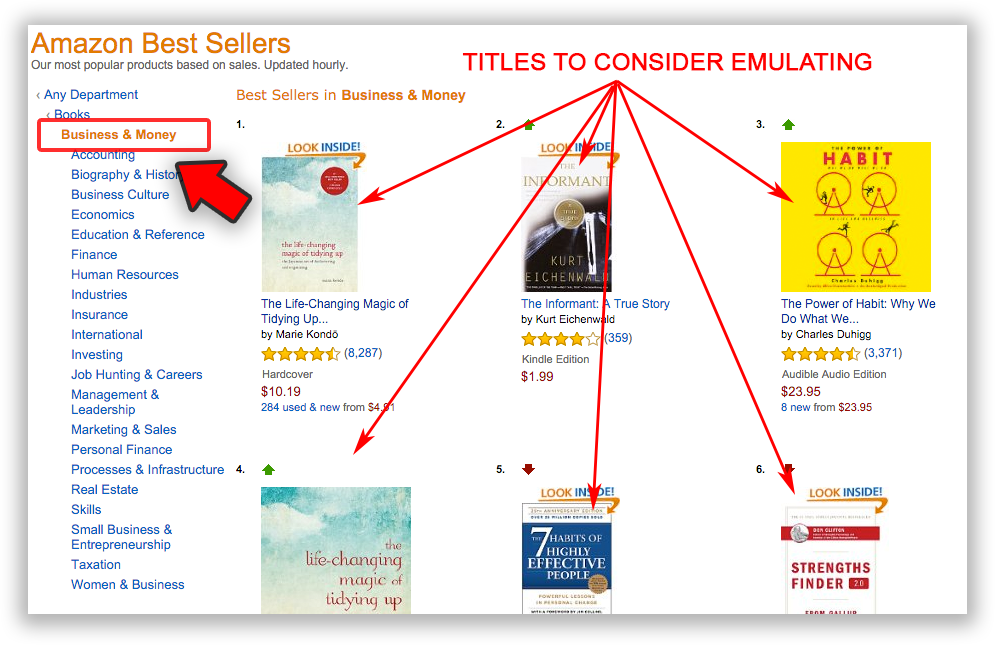
Okay, you’ve got yourself a great book with a winning title. Now, how much should it cost?
8. Pricing: High Price Niche vs. Low Price Broad
There are two pricing models, with corresponding launch strategies:
- High Price, Niche
- Low Price, Broad
High Price, Niche
If your primary goal is making money, consider writing about a very niche topic, providing a ton of value, and pricing your book extremely high.
If you choose this model, you’ll want to set up your own sales page and use a payment provider like SamCart or GumRoad. You can increase your price point even further by offering add-on services like courses, consulting, videos, etc. Two examples of this are *Authority, by Nathan Barry, and *Design+Code, by Meng To.
Low Price, Broad
(Recommend for list-building / your first book)
For this method, you’ll launch on Amazon with a lower price point ($0.99-3.99). This option will give you more exposure―and, therefore, more opportunity to build your list.
Amazon has millions of customers. Every day, those customers are searching for products. By publishing on Amazon, you’re gaining access to a massive new audience. Plus, Amazon takes care of production and fulfillment.
9. Selling Platforms: Amazon, or Direct Pay?
If you want people to pay you directly for your books―without a middleman like Amazon, you can use Gumroad. It’s very simple. Just go to their site, sign up, and you’ll be up and running in minutes. But because this guide is focused on list-building, this section will cover Amazon setup. Amazon is the smarter choice for list-building, simply because their platform is so massive.
That said, it also takes a little more work because you’ll distribute through both Kindle (digital) and CreateSpace (paperback).
Using the links above, sign up for both Kindle and CreateSpace. (FYI, both services are owned by Amazon). This will make your book available in both digital and paperback formats for your launch, without costing anything up front (except for a few small things like obtaining an ISBN. Just follow the steps provided by Amazon).
Important: When you sign up for Kindle, make sure you enroll in KDP Select. This will allow you to launch your book with a price tag of $0.00 for the first few days. This is key because:
- People love free. A bunch of people will download your book due to the nonexistent price tag. And guess what? If you follow my guidelines correctly, those customers are still incredibly valuable because they’ll notice the call-to-action on your opening pages, and a percentage of them will convert to list subscribers.
- Launching for free is the only way to deliver on the promise you made to people who subscribed to your list before the book was published. (Yes you could send a PDF, but giving them access to the actual Kindle version is much better.)
The other major piece of advice here is to spend time on your book description.
The book description is actually an advertisement. It can can have a big impact on converting prospects into paying customers. You can find books with good descriptions by using the same strategy I mentioned for crafting a title:
- Go to Amazon and browse the bestsellers in the business category
- Find a book that matches the style of your book, and then mimic the layout and content of their book description. For example, for my book, The Connection Algorithm, I mimicked Tim Ferriss’ description for The Four Hour Workweek.
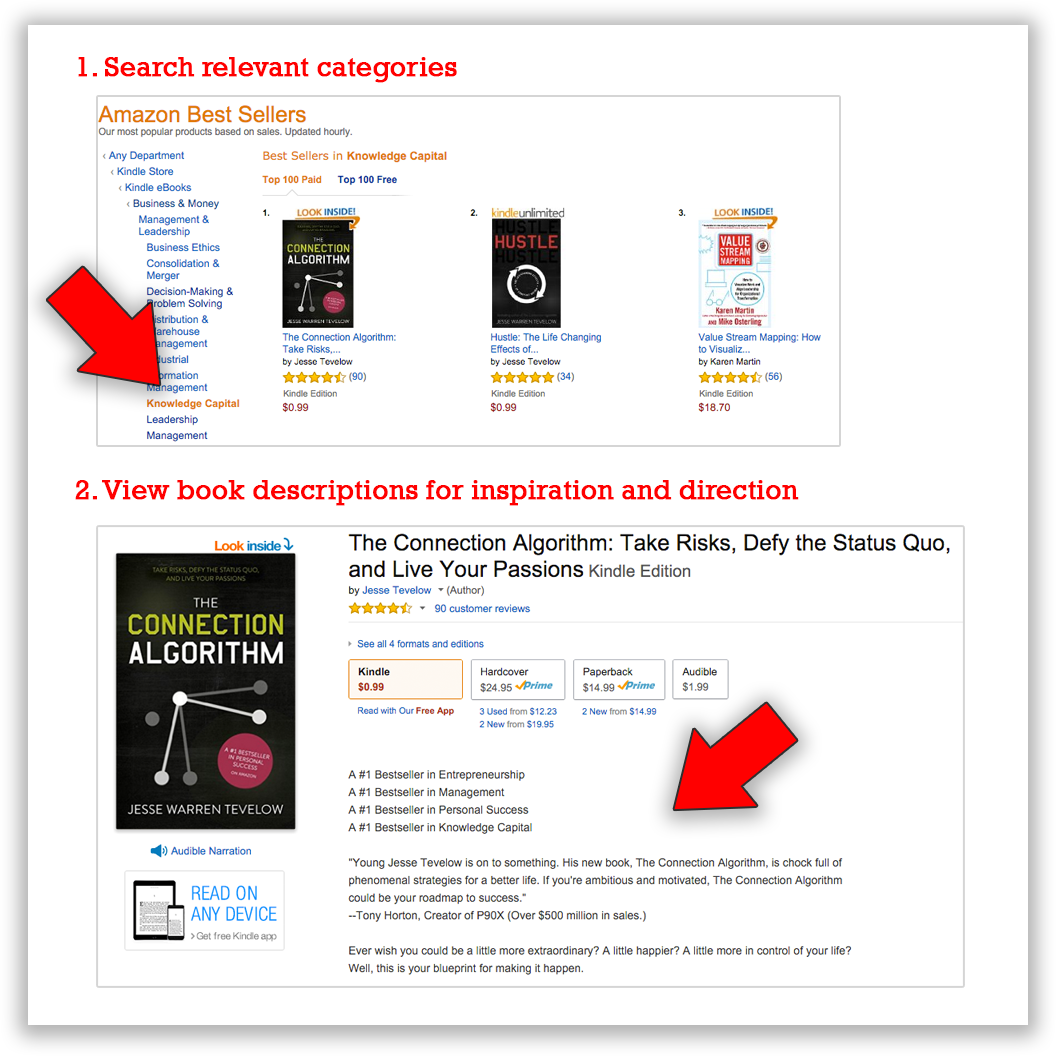
After you’ve written your book written, designed it, included all the proper marketing hooks, settled on a title, set your pricing, and optimized your book description―it’s time to launch.
10. Launch Week: How To Capitalize on Your Hard Work
During launch week, you have every excuse to go crazy with promotion. You’ve spent months crafting your product and putting the right hooks in place to grow your list.
Here are some of the things you should do:
- Mail your existing list and direct them to your book’s sales page during your free promo period (i.e. deliver on your pre-launch promise)
- Ask your launch team and your list subscribers for early reviews
- Schedule podcasts for release during this time. (You can usually arrange this with podcast hosts if you give them several weeks of notice).
- Post on Facebook and Twitter, or other social media platforms. Be careful not to waste too much time on this. I would focus more on your Facebook group vs. blasting messages out on Twitter, unless you have a huge following.
- For further reading on specific launch tactics, checkout these amazing articles: Scott Britton on OKDork, Taylor Pearson’s Jesus marketing, The book launch of yours truly (me)
Important Note: When you launch, your book will only be free on Amazon for up to 5 days (that’s the current limit set by Amazon). After your book switches to paid, you should stop offering a free copy as a lead magnet and replace it with something else. An easy option is to simply offer a sneak peek of the first few chapters in PDF format. If you have other material to offer, that’s fine too.
This Isn’t the End. It’s the Beginning.
Books give you an easy channel to grow your list, which can be leveraged to sell future products and services. I never assume the product I’m working on is my last. I assume it’s a build up to something bigger.
Your book is a promotional tool to be leveraged everywhere. I've used mine to gain notoriety as a thought-leader on the topics of writing and entrepreneurship. As a result, I've been invited to appear on numerous podcasts, and to write articles for big-time brands like Sumo.
All of this peripheral activity around the book keeps the marketing flywheel spinning, which means more site traffic, and more subscribers to my list.
Start Writing Your Book to Bring in Subscribers NOW
There’s a lot of information packed into this article. That’s just how Sumo rolls. Take a deep breath. You made it! (Maybe consider bookmarking this? nudge nudge)
Do one thing at a time and you’ll be fine. You can get started right now with this simple step:
Install Sumo’s Welcome Mat on your website to start collecting emails. Remember to offer a free copy of your upcoming masterpiece (even if you haven’t written a single word yet).

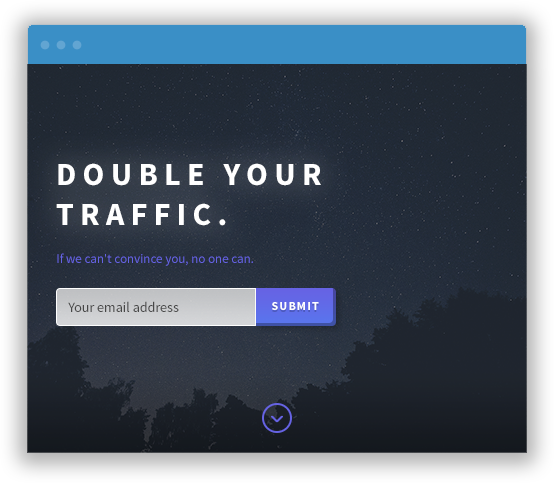
Comments